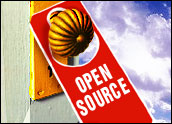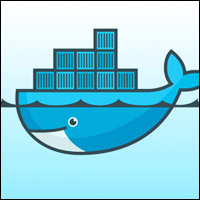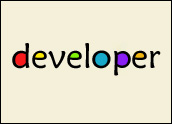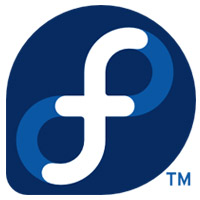
Virtualization — the use of multiple instances of operating systems, applications, or other software running on single hardware devices — comes in many different forms and flavors, but among the most often mentioned of late is XenSource and its open source Xen virtualization technology.
While still not on the scale of virtualization giant VMware in terms of either features or popularity, Xen has been highly anticipated and is now the subject of a significant debate over its readiness for business production environments.
Xen also recently announced an interoperability arrangement with Microsoft, prompting harsh criticism from some, but also paving the way for further interoperability between Linux and Windows when it comes to virtualization in the datacenter.
LinuxInsider caught up with XenSource Chief Technology Officer Simon Crosby recently to discuss Xen’s Linux and Windows interoperability, and to find out what we might expect to see next from Xen.
LinuxInsider: XenSource and Xen virtualization software has certainly been a hot topic lately. What has been the organization’s biggest news in the last month or so?
Simon Crosby: We are tremendously excited by the industry’s positive response to our announcement of a strategic partnership with Microsoft. This is quite profound for the industry and for XenSource. It is the first time of which we are aware that Microsoft has partnered with an open source company. It is also the turning point for the industry in terms of virtualization. Whereas previously virtualization all happened ‘outside the OS,’ with the adoption of the Xen architecture for paravirtualization in Longhorn — Microsoft calls this ‘enlightenment’ — this completes the set of [operating system] vendors that have adopted our architecture in the OS.
The next release of every OS will contain enlightenments that make it suited to run on the high performance architecture that we deliver in XenEnterprise and that we make freely available in the Xen project. The future of x86 virtualization is paravirtualization, with hardware-assisted virtualization being the key to high performance support for both legacy guests and future enlightened Windows guests.
LinuxInsider: What is your response to the contention that it was a mistake for Novell to include Xen software in its latest major release with Suse Linux Enterprise 10?
Crosby: I’m not sure who is advancing that idea. I can’t imagine why it is a mistake — Xen offers a high performance ‘built-in’ virtualization infrastructure for SLES 10 that has gone through all of the normal Suse certification and QA procedures. If you don’t believe me, read Novell CTO Jeff Jaffe’s blog regarding their view on Xen’s readiness.
LinuxInsider: What about Red Hat’s contentions that while it is on schedule to be included in the next RHEL at the end of the year, Xen is not currently production-ready for enterprises?
Crosby: There is no product on the planet that has ever gone from first shipment to the heart of the data center in one go. So this fuss about enterprise readiness is a storm in a teacup, and mostly about the Linux vendors positioning against each other. Xen is in its earliest days of product shipment, and the standard model for getting software into production in the enterprise will apply: Users will kick the tires, there will be tests, more tests and more tests. When users are ready to trust Xen with mission critical workloads, it will go into the data center. The term ‘enterprise ready’ has no meaning other than in the mind of the user.
LinuxInsider: Is inclusion in Linux distributions the main distribution vehicle for Xen technology? What other ways does it or will it get to users?
Crosby: The Linux distros are key to volume shipment of Xen to market this year. They are the vendors with the largest footprint, the installed base, the service and support capability, and the infrastructure and relationships with OEMs (original equipment manufacturers) to do the ‘hard grind’ of testing and certification. Their market is the Linux market.
XenSource, with its XenEnterprise product, is bundling the same Xen capabilities as the distros will take to market, and delivering them to the Windows market in its virtualization platform XenEnterprise. We are targeting volume virtualization based on the ramp-up of Intel VT and AMD V-enabled CPUs (central processing units) that begins this quarter. Hardware-assisted virtualization is the key to price/performance of virtualization and to massive adoption. Microsoft fully endorses our strategy, and will support Windows on XenEnterprise.
LinuxInsider: Does the benefit of getting Xen virtualization software in the hands of users and administrators outweigh the relative immaturity of the technology?
Crosby: Xen runs in production today for tens of thousands of [virtual machines] in enterprises that count in the top 10 of the Internet properties. Most of those companies have IT expertise that allows them to ‘roll their own’ solutions based on the freely available open source code base, and to support themselves.
What has been missing from Xen until the product shipments — commencing with SLES 10 — has been the infrastructural support required to make the product consumable, the certification on OEM hardware, and the support and service capabilities that enterprises require. This infrastructure is now being built and delivered, and customer use cases and feedback are critical to this process of refining the product.
LinuxInsider: How does Xen benefit from being open source software?
Crosby: Xen draws on the contributions of over 20 major enterprise IT vendors. We are lucky to have major vendors such as IBM, Intel, AMD, HP, Novell, Red Hat, Unisys, Fujitsu and many others contributing to the code, testing it, and working collaboratively on the development and maintenance of what is, in effect, an open source industry standard hypervisor code base. Open source aligns economic incentives correctly.
By comparison with VMware, which builds and sells a proprietary stack, our vendor community enables everyone to benefit financially from their contributions to Xen. For example, Intel contributed the Intel VT code, x86-64 support and much more, because it enables customers to use those features of Intel processors.
More importantly, the moment Xen supports Intel VT, that capability set is delivered to every OS guest type that we support. Similarly, IBM and Novell have been leading the charge on the implementation of industry standard management APIs (application programming interfaces) for Xen, from the DMTF (Distributed Management Task Force).
Every management tool that wants to manage Xen virtualization will be able to use the same standard APIs. This is key to volume adoption of a standard virtualization platform. The fact that Xen is open source enables a rich ecosystem of ISV (independent software vendor) offerings to surround the product in value-added offerings to customers. Xen is a crucial component in moving the industry from a single closed source virtualization provider to an open ecosystem based on best-of-breed products and customer choice.
LinuxInsider: Does this give the company a leg up on Linux users and administrators?
Crosby: Our open source heritage makes Xen very acceptable to the Linux market. We are really pleased by the reception of Xen in SLES 10, and the support of Xen in Fedora Core, Ubuntu, Mandriva, Debian and rPath, and a lot of other Linux distributions. We think that Xen offers the Linux IT manager a feature set and a use model that they will find easy to use and very powerful. Key to enabling the Linux market is the delivery of productized bundles of Xen from the enterprise Linux Distros, as well as inclusion in all of the other distros.
LinuxInsider: What about Windows — what does XenSource hope to gain from its recent interoperability deal with Microsoft?
Crosby: Our strategic partnership with Microsoft will enable us to deliver interoperable virtualization solutions to the industry. XenSource will collaborate with Microsoft to enable our Linux distro partners to benefit from the paravirtualization/enlightenment capabilities in future Longhorn Server, by exploiting the Windows Hypervisor. XenSource is also working to deliver high performance support of Windows on XenEnterprise, and interoperable virtual hard disk formats. We aim to deliver this capability to our customers and open source partners. It is our intention to deliver for-revenue product into the Windows market, beginning in Q4 this year with XenEnterprise, and extending into the future on the future Longhorn Server virtualization platform.
LinuxInsider: What is your response to criticism that this runs contrary to the company’s open source roots?
Crosby: The criticism is patent nonsense. Everything we do enables open source virtualization. We have no proprietary agenda, and we have no agenda to be the next ‘network OS.’ We just want to deliver to the market, as broadly as possible, the incredible power of the Xen architecture. Everything we do is focused on broad enablement, and offering customers choice of best-of-breed capabilities, as opposed to a single vendor, closed source stack.
LinuxInsider: What is the biggest new development in Xen virtualization software to watch for in the next few months?
Crosby: Watch for product from Red Hat — Fedora Core 6 is almost ready, with the latest Xen bits. This will evolve into RHEL 5. Powerful new SMP (symmetric multi-processing) scheduling support, enhanced support for VT and AMD V processors, a new shadow page table implementation and impressive performance gains for HVM (hardware virtual machine) guests. There is a lot of testing to do, and the community is working very hard to increase the scope of guest support and feature set coverage as Xen goes to market. 2006 is all about Xen going to market.

















































